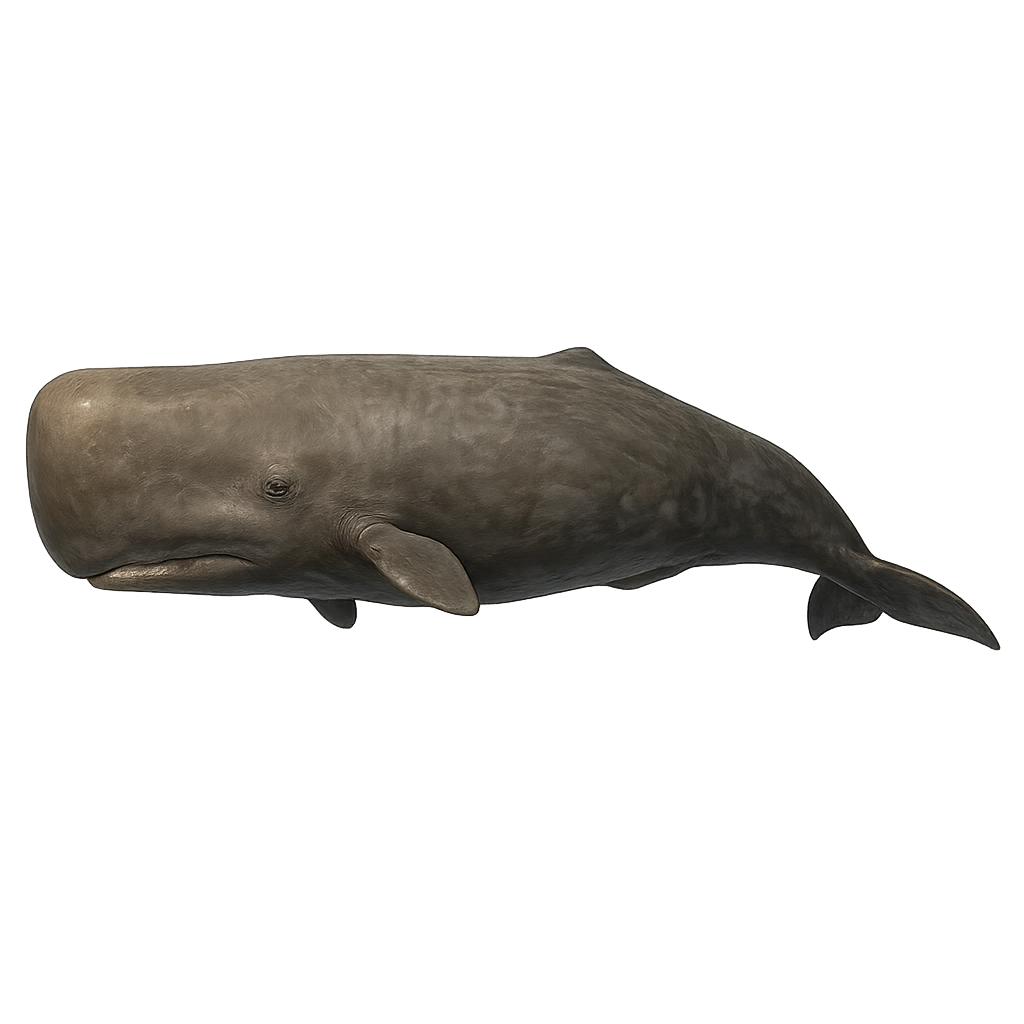Your wildlife photography guide.
Explore the sperm whale in detail, study its behavior, prepare your shots.
Where to observe and photograph the sperm whale in the wild
Learn where and when to spot the sperm whale in the wild, how to identify the species based on distinctive features, and what natural environments it inhabits. The WildlifePhotographer app offers tailored photography tips that reflect the sperm whale’s behavior, helping you capture better wildlife images. Explore the full species profile for key information including description, habitat, active periods, and approach techniques.
Sperm whale
Scientific name: Physeter macrocephalus

IUCN Status: Vulnerable
Family: PHYSETERIDAE
Group: Marine mammals
Sensitivity to human approach: Suspicious
Minimum approach distance: 100 m
Reproductive period: May to August
Duration: 14-16 mois
Births: May to August
Habitat:
Deep oceans and seas, mainly in cold and temperate waters
Activity period :
Activity varies depending on season, weather, or human pressure.
Identification and description:
The Sperm Whale is the largest of the toothed cetaceans and the largest living marine predator today. It is easily recognizable by its massive head, which makes up about one-third of its total body length, and its streamlined body. This cetacean, which can reach up to 20 meters in length and weigh several dozen tons, is a deep-sea creature, primarily feeding on squid, including giant squids, which it hunts at extreme depths.
The Sperm Whale is known for its long migrations, traveling thousands of kilometers between breeding grounds in the tropics and feeding areas in colder waters. Although it was intensively hunted for its oil and blubber in past centuries, it remains a protected species. The Sperm Whale also plays a crucial role in the marine ecosystem by regulating prey populations and maintaining the balance of food chains.
Recommended lens:
400 mm – adjust based on distance, desired framing (portrait or habitat), and approach conditions.
Photography tips:
Use a telephoto lens to photograph sperm whales in their natural habitat. Surface moments, such as when they breathe or move, are ideal for capturing beautiful images. Always maintain a safe distance to avoid disturbing their natural behaviors.
The WildlifePhotographer App is coming soon!
Be the first to explore the best nature spots, track rutting seasons, log your observations, and observe more wildlife.
Already 1 429 wildlife lovers subscribed worldwide

